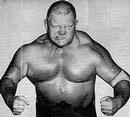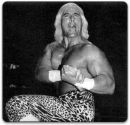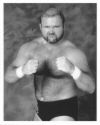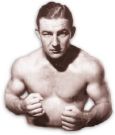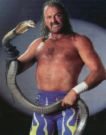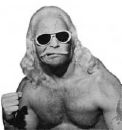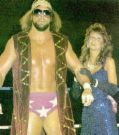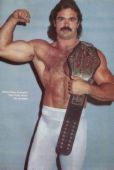wrestling photos
main page
about Page
legends page #1
legends page #2
wrestling Links
hall of fame
top 13 best wrestlers of all time
top 13 worst wrestlers of all time
my thoughts and opinions.
Deceased Wrestlers
tribute page
Guest Book &contact
legends of wrestling
everyone check out these pictures "the legends of wrestling "
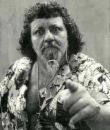
captain lou albano great damn wrestling manager. he culd get a fire going quick with is boasty charater.
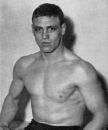
Alfred Hayes (born August 1928 in Windermere, Cumbria, England, died July 21, 2005) was a professional wrestler, manager, and later World Wrestling Federation (now WWE) commentatorPlaying Ed McMahon to Vince McMahon's Johnny Carson on Tuesday Night Titans, a WWF-style talk show from 1984 to 1986, Lord Alfred Hayes became familiar to WWF viewers as a light-spoken Englishman with an uproarious laugh. On TNT, Hayes usually was the victim of several slapsticks; including getting a face-full of powder, slopped with pumpkin-innards by Captain Lou Albano, nearly bitten by one of Hillbilly Jim's goats, and even slapped in the face by "Rowdy" Roddy Piper.Hayes appeared at WrestleMania in 1985 where he was kissed by The Fabulous Moolah. At WrestleMania 2, he served as commentator alongside Jesse "The Body" Ventura and Elvira for the Los Angeles portion of the event. For the Coliseum Video release of WrestleMania III, Hayes briefly appeared alongside Gorilla Monsoon in hype for the event. As the WWF's video library began to expand, Hayes became a mainstay in many of the releases; such as "Ettiqute With Lord Alfred Hayes", a short segment on the WWF World Tour 1991 tape, where he attempted to teach table manners to Sensational Sherri and The Brooklyn Brawler. He later appeared on the video releases of WrestleMania VII and WrestleMania VIII. He also appeared on some early episodes of Monday Night RAW. He ultimately retired from the WWF in 1995, after suffering a car accident.As a result of the accident, he suffered gangrene and was confined to a wheelchair for the remainder of his life. He eventually suffered a series of strokes and died on July 21, 2005 at his home in Texas. On the following episode of Monday Night RAW, the WWE paid tribute to Hayes with a ten bell salute and a video memorial..
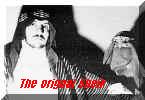
the orignal sheik real name edward farhart born 1924 died 2003....r.i.p. the sheik was one of the first badasses of wrestling.you didn't fuck with the sheik..he'd stab you with pencils,cut you with sharp objects and if you pissed him off enough he blow your ass up with a mysterious ball of fire. thus he is called the wild man from araby.the late uncle of "sabu" the original sheik not to be confused with the iron sheik

ring name:superstar billy graham.born as :Eldridge Wayne Coleman Height 6 ft, 4 in. (193 cm) Weight 275 lb (125 kg) Born September 10, 1943 in Paradise city,Az. his debut was 1969 and retired 1997.graham was trained by:stu hart
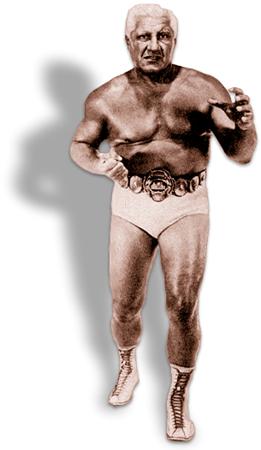
"Classy" Freddie Blassie (February 8, 1918 – June 2, 2003) was an American professional wrestler born in St. Louis, Missouri and 1994 WWE Hall of Fame inductee who was a popular wrestling villain.Fred Blassie was born in St. Louis, Missouri and raised in nearby Normandy, Missouri. He excelled at baseball, football, and boxing while in high school. After school he chose professional wrestling over boxing as a career, while working as a butcher for his day job; Blassie claimed to have made his pro wrestling debut in 1935 after training with Billy Hanson. He joined the United States Navy at the onset of World War II, and earned titles in boxing and sport wrestling while in service in the Pacific Theater. He also continued professional wrestling under the name Sailor Fred Blassie when in port.His first match was against Don McIntyre in Birmingham, Alabama for the NWA Southern Heavyweight Title on his 26th birthday. As he became one of NWA's top wrestlers, Blassie bleached his hair and adopted his trademark rulebreaking style. In Japan, his penchant for drawing blood earned him the nickname "The Vampire" because he had filed down his teeth to sharp points so he could cause bloody massacres. He was also stabbed 23 different times, had his car set on fire, had acid poured on him, and became blind in the right eye when a fan threw a hard-boiled egg at his face. Every time the fans saw him, they would run away in terror. Based on his success, Blassie was brought back to Los Angeles by promoter Jules Strongbow Blassie had been wrestling many competitors like The Destroyer (Dick Beyer), Bearcat Wright, Mr. Moto, Mil Mascaras, Bobo Brazil, to name but a scant few. The "Blassie Cage" matches then flourished. The best remembered moment in his life is his legendary feud with John "The Golden Greek" Tolos, which dates back four decades, and set new levels for violence in the wrestling ring.Blassie retired as a wrestler at the end of 1973 and focused on being a manager. Here he was equally successful at drawing heat, especially during his run as part of the World Wrestling Federation's Evil Trinity of managers with "The Captain" Lou Albano and The Grand Wizard of Wrestling.With his recording of the song "Pencil Neck Geek" and the bizarre movie My Breakfast with Blassie (co-starring comedian Andy Kaufman), he maintained a devoted cult following, which was only heightened by his continued wrestling appearances throughout the 1980s in the WWF. Even after he retired as an active performer in 1986, Blassie was still one of the most popular wrestling personalities in the world.He appears as a lyric in the R.E.M. song "Man on The Moon": Mister Fred Blassie in a breakfast mess, with "breakfast" referring to the title of his movie.In the early 1990s, the wrestler starred in a bizarro documentary directed by Jeff Krulik, titled Mr. Blassie Goes To Washington. In it, Blassie is picked up at the Washington DC airport by a limo full of young women, escorted around the nation's capitol, gives his opinions and confronts tourists. When meeting someone, he would ask where they were from, and no matter their response, he would reply with, "Oh, that's God's country!" Before his death, he released his autobiography, Listen, You Pencil Neck Geeks. Even as his life was ending, he was still involved in wrestling. His last appearance on WWE television was exactly three weeks before his death, when he came out to ringside in his wheelchair and participated in a storyline with The Dudley Boyz, climaxing his appearance by telling the Dudleys to "get the tables!"He died on June 2, 2003 from heart and kidney trouble. He is survived by his wife Miyako. From "The Hollywood Fashion Plate" and "The King of Men" to "The Vampire" and just plain "Classy" Freddie Blassie, he will always be remembered by fans.

michael p.s. hayes of the fab.freebirds (p.s. stands for pure sexxy) real name"michael seitz"ht."6'1.270lbs. born:march 29,1959 from marietta, ga. best known for his day in the fabulous freebirds.the man from badstreet u.s.a. kicked some ass.
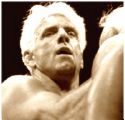
the nature boy ric flair ...real name:richard morgan flier..born febuary 19,1949 in memphis,tennessee ht.'6'1,234'lbs. ric flair notable one of the most glorious wrestlers of all time.the dirtiest player in the game.ric did what it took to win . even if it ment to poke or gauge your fuckin eyes or kick you in the balls.whatever it took to get on top and stay on top
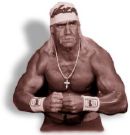
hulk hogan Ring name(s) The Super Destroyer ,Terry "The Hulk" Boulder,sterling golden,hulk machine,the hulkster,hollywood hogan.hollywood hulk hogan,mr.america,hulk hogan ,the immortal'hulk hogan,the incredable'hulk hoganTerrence Gene Bollea (born August 11, 1953 in Augusta, Georgia), best known professionally as Hulk Hogan (and occasionally Hollywood Hulk Hogan), is an American professional wrestler and actor. He is currently the star of the VH1 reality show Hogan Knows Best and also makes occasional appearances for World Wrestling Entertainment on the RAW brand. Height: 6 ft 7 in (201 cm); weight: 280 lbs (127 kg). Informed in the 80s: 330 lbs (150 kg During his 1980s heyday wrestling for the World Wrestling Federation as the wholesome babyface character "Hulk Hogan," Terry Bollea became the highest-drawing, most popular wrestler in the history of the business. After flagging popularity, a steroid scandal, "retirements," and lawsuits damaged his momentum in the 1990s, he signed with WWF rival World Championship Wrestling.He later turned heel in July 1996, re-energizing and redefining his career as the greedy and manipulative villain Hollywood Hogan as part of the nWo. After WCW went out of business in spring of 2001, Hogan made his comeback to the WWE, the company that made him a mega-star, in February 2002.During his long career, he appeared and starred in several movies and TV shows and now makes occasional World Wrestling Entertainment appearances and manages the music career of his daughter Brooke Hogan.Hogan is now officially recognized as a fifteen-time world heavyweight champion, since his two American Wrestling Association [AWA] title reigns were validated in April 2005. His loyal fans are referred to as "Hulkamaniacs." Hulk Hogan was also the spokesperson for the Legends of Wrestling video game.Hogan was born Terrence "Terry" Gene Bollea to Italian-American Pete Bollea, and Ruth Bollea, who is of French, Italian and Panamanian descent. Early in life, Terry Bollea was a standout in minor league baseball and also spent ten years playing bass guitar in several Florida-based rock bands, including Ruckus and Infinity's End. Many of the wrestlers who competed in the Florida territory at that time would visit the bars in which Bollea was performing. Bollea's impressive physical stature soon caught the attention of former top-drawing wrestler Jack Brisco and his brother Gerald, both of whom convinced Bollea to give wrestling a try. Bollea had been a wrestling fan since childhood and was eager to give it a chance. He trained for nearly two years under the watchful eye of legendary wrestler, Hiro Matsuda, a hard-nosed taskmaster who casually (and to instill respect, purposefully) broke Bollea's leg during their first training session.Bollea wrestled his first professional match in Tallahassee, Florida on August 19, 1977 as The Super Destroyer, wrestling B. Brian Blair to a draw. Terry also used other ring names early in his career, including Terry "The Hulk" Boulder and Sterling Golden. In those formative years, Bollea would go on to win his first wrestling championships, the National Wrestling Alliance Southeastern Heavyweight Championships recognized in Alabama and Tennessee, respectively. Bollea even had an early shot at the NWA World Heavyweight Championship, with its holder generally recognized as the industry's #1 wrestler, in January 1979, facing NWA kingpin Harley Race.World Wrestling Federation: the first run On November 13, 1979 Bollea made his debut in the World Wrestling Federation as a heel and was given the name "The Incredible" Hulk Hogan by Vincent James McMahon, then the majority owner of the Capitol Wrestling Corporation (at the time, the parent company of the Federation). In his debut, Hogan wrestled three matches in Allentown, Pennsylvania during one of the Federation's marathon television tapings. Hogan was victorious in all three bouts, squashing Harry Valdez in the first match, Paul Figueroa in the second, and Ben Ortiz in the third. One month later on December 17, Hogan made his Madison Square Garden wrestling debut, defeating Ted DiBiase in 11 minutes, 12 seconds.The later, official explanation for the "Hulk Hogan" moniker was that many considered Bollea to be physically bigger than Lou Ferrigno, who at the time was starring in the popular TV series The Incredible Hulk. McMahon also wanted him to be a tough, working-man brawler with a possible Irish background at the same time, thus the name "Hogan." A deal was later struck with Marvel Comics to use the "Hulk" name. In February 2005, Bollea himself purchased the rights to the name "Hulk Hogan." Hogan started out in the WWF as an arrogant heel, clad in a golden cape and managed by "Classy" Freddie Blassie. During his first run with the WWF, Hogan feuded intensely with WWWF (World Wide Wrestling Federation) World Heavyweight Champion Bob Backlund, "Mr. U.S.A." Tony Atlas, and a man he had met previously in the deep South and would see much more of down the road in his career: the 7'4", 520-pound André the Giant. Hogan and André would go on to clash in a historic match on August 9, 1980 in front of 36,295 fans in Shea Stadium in Flushing, NY. This was part of the WWF's Showdown At Shea event. In 1981, Sylvester Stallone personally offered him a part in the movie Rocky III. Industry etiquette demanded that he first ask for his boss' (Vincent J. McMahon) permission. McMahon said no, but Hogan took the part anyway, expecting the role to dramatically increase his profile and earning potential. McMahon fired Hogan, who would not appear with the company again for several years.American Wrestling Association After filming his scene for Rocky III, Hogan made his debut in the Minnesota-based American Wrestling Association, owned and promoted by Verne Gagne. Hogan started his AWA run as a heel, taking on "Luscious" Johnny Valiant as his manager, but AWA audiences loved the muscular Hogan, and soon AWA bookers were compelled to turn Hogan face.Hogan quickly became the AWA's top draw and feuded with world champion Nick Bockwinkel, but owner Gagne, a former college wrestler who emphasized mat skills over showmanship, was reluctant to give Hogan a run with the belt. On two different occasions, Hogan had been scripted to win the AWA Championship from heel champion Nick Bockwinkel and have it revert back to Bockwinkel by contrived technicalities (known as a Dusty finish). This was a common plot device, used to milk audience anticipation that the face would topple the heel "next time." But this time, the crowd reaction was so furious that only Bollea's pleas (on the PA system, in character as Hogan) kept them from rioting. Hogan, for his part, grew frustrated with the AWA's backstage politics over the world title, and was upset with promoter Verne Gagne's demands for a percentage of his Japanese earnings in exchange for the AWA Championship.New Japan Pro Wrestling During this period of Hogan's career, he was not competing strictly under the AWA (or any) banner. A great deal of Hogan's early success was achieved in New Japan Pro Wrestling. Japanese wrestling fans were in awe of the gargantuan blond American, and nicknamed him "Ichiban" (which translates to "Number One"). Hogan first appeared in Japan on May 23, 1980, while he was still with the WWF. He would tour the country from time to time over the next few years, facing a wide variety of opponents ranging from Tatsumi Fujinami to Abdullah the Butcher. When competing in Japan, Hogan used a vastly different repertoire of wrestling moves, relying on more "scientific" (i.e., technical, more amateur style-seeming) looking traditional wrestling holds and maneuvers as opposed to the power-based (feats of strength), brawling style U.S. fans were accustomed to seeing from him. On June 2, 1983, Hogan became the first International Wrestling Grand Prix tournament winner, defeating Japanese wrestling icon Antonio Inoki by knockout in the finals of a 10-man tournament featuring top talent from throughout the world. Hogan and Inoki also worked as partners in Japan, winning the prestigious MSG Tag League tournament two years in a row, in 1982 and 1983. Also Hogan's popularity in Japan was so great, he even recorded an album there - a forerunner to the World Wrestling Federation's "Rock' n' Wrestlin' Connection" of the mid-'80's.Hulkamania By 1983, Vince K. McMahon had bought the World Wrestling Federation from his father, with a goal of turning the WWF into a nationwide company, using Hogan's charisma, body, and name power as the top draw. Hogan made a dramatic return to the WWF at a TV taping on January 3, 1984, saving Bob Backlund from a three-on-one assault. Only weeks later, on January 23, Hogan won the WWF Championship, pinning The Iron Sheik in New York's Madison Square Garden[2]. He became the first ever Southern born WWF Champion in history.Hogan would remain WWF Champion for four years and 13 days, overcoming such challengers as André the Giant, "Mr. Wonderful" Paul Orndorff, Rowdy Roddy Piper, and King Kong Bundy, drawing record houses, PPV buyrates and TV ratings in the process. He co-hosted Saturday Night Live on March 30, 1985 and even had his own CBS Saturday morning cartoon during this lucrative run, titled Hulk Hogan's Rock 'n Wrestling.On March 31, 1985, the inaugural WrestleMania took place at Madison Square Garden, featuring Hogan in a tag team main event, with Mr. T his partner. Hogan would go on to headline seven of the first eight WrestleManias, from 1985-1992.A new storyline was introduced in early 1987: Hogan was presented a trophy for being the WWF Champion for three years. André the Giant, a good friend (who was seen pouring champagne over him in the Madison Square Garden locker room in the interview scene following his title win) came out to congratulate him. Shortly afterwards, André was presented a slightly smaller trophy for being "undefeated in the WWF for 15 years." In actuality, André had suffered a handful of countout and disqualification losses in the WWF, but had never been pinned or forced to submit in a WWF ring. Hogan came out to congratulate André, but André walked out in the midst of Hogan's speech. Then, on an edition of Piper's Pit, Hogan was confronted by Bobby Heenan. Heenan announced that his new protege was André. André then challenged Hogan to a title match at WrestleMania III, ripping the t-shirt and crucifix off of Hogan.WrestleMania III, held on March 29, 1987 at the Pontiac Silverdome in Pontiac, Michigan, set a North American indoor attendance record for any sporting event. An announced audience of 93,173, witnessed Hogan successfully defend the WWF World Heavyweight Championship against André the Giant. The match would become the most famous of Hogan's career, one which saw Hogan bodyslam the 520-pound Frenchman before pinning his shoulders to the mat. The match was considered as being a "passing of the torch" between one of the biggest stars in wrestling of the 1970's, André, and the biggest star in wrestling of the 1980's, Hogan. Years later, Hogan stated that André was so heavy; he felt more like 700 pounds.Hogan lost the belt in extremely controversial fashion to André on NBC's "The Main Event" on February 5, 1988, thanks to a convoluted scam involving "The Million Dollar Man" Ted DiBiase and "evil" twin referee Earl Hebner (in place of the match's appointed arbiter, his twin brother Dave Hebner). After the match, André handed the title over to DiBiase to complete their storyline business deal. As a result, the WWF Championship was vacated for the third time in its 25-year history, and all this in turn led to Hogan's on/off friend "Macho Man" Randy Savage taking the vacant title in a tournament at WrestleMania IV a month later.Note: The live primetime NBC broadcast of The Main Event on February 5, 1988 is the highest rated television show in professional wrestling history, with a 15.2 rating.Together, Hogan, Savage, and manager Miss Elizabeth formed a partnership known as The Mega Powers. The Macho Man Randy Savage played an instrumental role in Hogan's character development. However, the Mega-Powers would soon implode from within, due to Savage's burgeoning jealousy of Hogan and his paranoid suspicions that Hogan and Elizabeth were "more than friends." A feud between Hogan and Savage began, which culminated with Hogan beating Savage for his second WWF Heavyweight Championship at WrestleMania V on April 2, 1989. Hogan's second run lasted a year, during which time he starred in his first movie, No Holds Barred; the movie was the inspiration of a feud with Hogan's co-star in "No Holds Barred" Tiny Lister, Jr., who appeared at wrestling events as his movie character, Zeus. Zeus was a monster heel who was "jealous" over Hogan's higher billing and now wanted revenge. However, Hogan was easily able to defeat Zeus in a series of matches across the country during late 1989, beginning with a tag team match at SummerSlam. Also during his second run, Hogan won the 1990 Royal Rumble Match, last eliminating Mr. Perfect. He dropped the title to Intercontinental Champion The Ultimate Warrior on April 1, 1990 at WrestleMania VI. It was the first time in over seven years that Hogan was pinned. That title match was notable in that the two wrestlers were both faces, and Hogan graciously handed Warrior the belt and shook his hand at the conclusion of the match, remembered as one of the most sportsmanlike displays in WWE history.Hogan soon became embroiled in a heated feud with the 468-pound Earthquake, a mountain of a man who gained infamy by crushing Hogan's ribs in a sneak attack on "The Brother Love Show" in May 1990. On TV, announcers explained that Hogan was depressed over his injuries and his WrestleMania VI loss to The Ultimate Warrior and both took such a huge toll on his fighting spirit that he wanted to retire. Viewers were asked to write letters to Hogan and send postcards asking for his return (they got a postcard-sized picture in return, autographed by Hogan, as a "thank you"). Hogan returned by SummerSlam 1990 and dominated Earthquake in a months-long series of matches across the country.On March 24, 1991, Hogan stood up for the USA against Iraqi-sympathizer Sgt. Slaughter, outwitting him for his third WWF Championship at WrestleMania VII. Hogan lost the title to The Undertaker at the Survivor Series on November 27, 1991, in an infamous bout marred by interference from the legendary "Nature Boy" Ric Flair. Just six days later, Hogan regained the title in a match held on a special pay-per-view named Tuesday In Texas, but due to the controversy surrounding both matches, the title was again declared vacant. In the 1992 Royal Rumble, Hogan was eliminated by storyline friend Sid Justice and failed to regain the championship. In the ensuing five months, Hulk Hogan announced he was contemplating retirement from wrestling and would 'bow out' after his match against Justice at WrestleMania VIII on April 5, 1992. The match against Justice was not without controversy as Justice seemingly broke character and kicked out of Hogan's legdrop finish. In reality, he was covering for an error in timing, as Papa Shango was late to break up the pin. Hogan eventually won the match via DQ when Shango finally made it to the ring. The returning Ultimate Warrior saved Hogan from the post match beat down. Hogan later reconsidered his career and was back in the ring within a year.A lot of fictitious rumors surround the Hulk Hogan sensation, employed in part by the WWF and later WCW to sensationalize and hype up their star name. Hogan dyed his hair platinum blonde and wore a bandana. His usual colors were yellow and red; as a heel they were black and white. One statistic about Hogan that did stand, at least at the time, was that he had the largest arms in professional sports, a title he legitimately held only for a few years. "24-inch pythons" was a phrase commonly used to describe Hogan's arms.Hulk Hogan's incredible crossover popularity led to several television and movie roles. Along with 1982's Rocky III, he starred, as mentioned above, in No Holds Barred (1989), as well as Suburban Commando (1991), Mr. Nanny (1993), Santa with Muscles (1996), and 3 Ninjas: High Noon at Mega Mountain (1998). He made two appearances on The A-Team (in 1985 and 1986), and starred in his own TV series, Thunder in Paradise, in 1994.End of Hulkamania?Hogan returned to the WWF in January 1993, helping out his longtime friend Brutus Beefcake in his feud with Money Inc.. Hogan scooped his fifth WWF Title on April 4 of that year, overcoming Yokozuna in an impromptu bout at WrestleMania IX. At this point everything was looking good for Hogan, he had the World Wrestling Federation Championship once again and it seemed like Hulkamania was back and better then ever. However, this was not the case at all. At the first annual King of the Ring pay per view, Hogan had to defend the title against Yokozuna again. He had been beaten down throughout the entire match, then a camera flash temporarily blinded him which allowed Yokozuna to pick up the victory by using his own version of Hogan's legdrop on him. After his victory, Yokozuna proceeded to give Hogan a Banzai drop amidst the crying children and cursing adults. As Yokozuna celebrated, Hogan was helped back to the locker room by ringside officials, as he clutched his face. Hulkamania had seemingly taken its final breath.Hogan departed the WWF two months later after a series of bouts against Yokozuna on the Hulkamania European tour. An impending steroid scandal led to Vince McMahon deciding to phase out large, muscular wrestlers such as Hogan and give the top spots to smaller, more technically sound wrestlers such as Bret Hart. After Hogan left the WWF, he decided to concentrate on movies and TV and take time off from professional wrestling.World Championship WrestlingIn June 1994 Hogan was expensively lured back to the ring by Ted Turner's World Championship Wrestling, which was the WWF's main competitor at the time. When Hogan signed with WCW, officials (namely, Eric Bischoff, who convinced Hogan to join WCW in the first place) hoped that they could relive the glory days of Hulkamania, but everyone involved also knew it would be tough to convince many loyal, old-school WCW fans of Hogan's worth, particularly the southern fans that were traditionally anti-WWF. Hogan was also at this time given virtually absolute creative control over his onscreen character. Hulk Hogan's contract signing on June 11 was held at Disney World in Orlando, following a red-and-yellow ticker tape parade.Hogan won the WCW World Heavyweight Championship in his debut match, overcoming Ric Flair in a genuine 'dream' match on July 17. After tussling with Flair, Vader, and the Dungeon of Doom for the next eighteen months, Hogan dropped the belt and began to only appear occasionally on WCW shows. WCW fans were clamoring for younger, more exciting international stars such as Chris Benoit and Eddie Guerrero and were growing tired of seeing Hogan's "red-and-yellow good guy" persona they had seen for ten years in the WWF. Hogan soon reinvented himself as a heel (his first time playing a heel role since 1981) and returned full-time on July 7, 1996 Scott Hall and Kevin Nash both left the WWF in early 1996 and returned to their old employer, WCW. They were portrayed as "Outsiders" and quickly announced their intent to "take over" WCW, with the help of an unnamed third member of their team (initially rumored to be Bret Hart). At the Bash At The Beach PPV, Hall, Nash and their partner were scheduled to face the WCW trio of Sting, Randy Savage, and Lex Luger. The third partner did not begin the match, and, after Luger left the match due to an injury, some assumed that he would be the "third man." When Hogan came out, many expected him to attack Hall and Nash. However, in one of the most shocking moments in wrestling history, Hogan leg dropped Randy Savage and declared himself to be Hall and Nash's partner, with the trio comprising what Hogan dubbed the New World Order. Hogan's turn to heel, after being one of the most popular and iconic figures in sports entertainment and sports in general, caused a great stir through the wrestling community. The next night on Nitro, Eric Bischoff announced that all night Sunday and all day Monday, WCW and Hogan received literally hundreds, if not thousands, of complaints from parents whose children had stayed up all night crying and destroying Hulkster merchandise. Hogan's move from face to heel signified a change in wrestling's character system, which in coming years would intentionally blur the lines between good and evil.Hogan soon dyed his beard black and renamed himself Hollywood Hogan. Hogan managed to redefine the heel character: rather than the traditional "bad guy" Hollywood Hogan gave birth to a more realistic, street-smart villain, with none of the usual wrestling gimmicks and devices. Some have placed Hollywood Hogan as one of the best and most effective heels in pro wrestling history.After defeating The Giant at Hog Wild on August 10, 1996 with the help of a foreign object, Hogan held the WCW World Heavyweight Championship for most of 1997. During this period he grappled with Roddy Piper, Randy Savage and many more. The ever-expanding nWo gang concurrently became the hottest concept in wrestling too, helping WCW to achieve 83 straight Monday night ratings victories over the WWF. The black-and-white nWo t-shirt also became one of the highest-selling pieces of wrestling merchandise ever during 1997.Hogan then lost the belt to Sting in a hugely-hyped, eighteen-months-in-the-making match at StarrCade in December 1997. The event was also the highest-drawing PPV in WCW's history. After Hogan spent 1998 wrestling celebrity matches with buddies such as Dennis Rodman and Jay Leno, he announced his retirement, and also attempted to launch a run for the U.S. Presidency in November (strictly as a publicity stunt to try to draw some of the hype of Jesse Ventura's Minnesota gubernatorial win back to him, as a jealous Hogan was upset that an inactive wrestler got more press than Hogan). At Starrcade 1998, Kevin Nash defeated Bill Goldberg for the WCW Championship. On what would become one of the most infanous nights in pro wrestling history, Nash put the the title on the line against Hogan. At this time, Nash was still a tweener while Hogan was effectively still a heel. The match was to take place on Monday Nitro in early Janurary 1999, Hogan entered dressed in street cloathes while Nash entered dressed in his usual attire. Once the bell rang, Hogan pressed Nash on the chest with his finger, shockingly Nash fell down and Hogan went for the pin. Hogan became the new WCW Champion and part of the nWo Wolfpac. Many consider this action to be the beginning of the end for WCW as the WCW Championship was effectively devalued due to the match, also WWF superstar Mankind would win the WWF Championship on the same night, earlier on WCW announcer Tony Schiavone had sarcastically revealed (under orders from Eric Bischoff) to give a away the results of the WWF main event which led to a large portion of the WCW audience to switch over to the WWF. Hogan would loose the WCW Championship to Ric Flair at Uncensored 1999. July 1999 saw Hogan return to his face persona in response to the growing numbers of fans who cheered him on though he still dressed in nWo colours but he was soon back in red and yellow. Injuries and frustrations were mounting up however, and Hogan was soon absent from TV from October 1999 to February 2000. In his book Hollywood Hulk Hogan, Bollea said that he was asked to take time off of TV from newly hired head of creative Vince Russo and not told when he would be brought back at the time. Despite some reservations, he agreed to do so. On October 24, 1999 at the Halloween Havoc Pay-Per-View in Las Vegas, Hogan was to face Sting for the WCW World Heavyweight Championship. However, Hogan came to the ring in street clothes, lay down for the pin, and left the ring.Soon after his return to WCW TV in February 2000, Hogan began feuding with Lex Luger, Ric Flair, and Billy Kidman. Then, at Bash at the Beach 2000, Hogan was involved in a very controversial, real-life incident with WCW booker Vince Russo. Hogan was scheduled to wrestle Jeff Jarrett for the WCW World Heavyweight Championship. Hogan felt that he should win because he felt Russo wouldn't use him in anymore future storylines. At that time Hogan still had several months left on his contract and was obligated to appear at more Pay-Per-Views. So, he used the clause in his contract that gave him creative control over all the finishes of his matches. According to Hogan, it was the only time he ever used that clause in his tenure with WCW. Russo was furious at Hogan because he did not think that Hogan should be the champion.Unbeknownst to Hogan, Russo told Jarrett to lie down in the middle of the ring and asked Hogan to pin him straight away. A visibly confused Hogan complied, then got on the microphone and told Russo "That's why the company is in the damn shape it's in, because of bullshit like this!" Russo responded by coming out and saying that he wanted to get rid of all the "old guys" and that since Hogan refused to job to Jarrett, a new WCW World Heavyweight Championship would be created, setting the stage for a title match between Booker T and Jeff Jarrett later that night. Hogan was never seen or mentioned on WCW television after the event, and he filed a defamation of character lawsuit against Russo soon after, which was eventually thrown out of court. Russo later revealed that the Bash at the Beach incident was in fact a work. However, since WCW could no longer afford to pay Hogan for any more Pay-Per-View appearances, Hogan was never called back and kept off WCW television (which put the wheels in motion for the lawsuit).World Wrestling Entertainment: The Comeback From July 2000 to November 2001, Hogan was extremely quiet and out of the public eye. He had been dealing with self-doubt and depression following the Vince Russo incident, wondering if what Russo had said about him was true. Hogan was also dealing with the death of his father Peter Bollea in December 2001, which he took very hard. Fans at the time had largely agreed with Russo's sentiments, feeling that Hogan was "washed-up" and had been holding down younger talents for too long. Hogan wanted to prove his detractors wrong and show them that he still had another run or two left in him.In the months following the eventual demise of WCW in March 2001, Hogan underwent surgery on his knees in order for him to wrestle again. As a test, Hogan worked a match in Orlando, Florida for the XWF promotion run by his longtime handler Jimmy Hart. Hogan defeated Curt Hennig in this match and felt healthy enough to accept an offer to return to the WWF in February 2002. Initially, Hogan returned as leader of the original nWo with Hall and Nash. Soon after arriving, he fought a memorable match against The Rock at WrestleMania X8 on March 17, 2002. This was Hogan's only WrestleMania match fought as a heel, but the record SkyDome crowd of 68,237, cheered wildly for Hogan, effectively turning him face during the match. The Rock cleanly won the contest but befriended Hogan at the end of the bout and helped him fight off Hall and Nash, who were upset by Hogan's conciliatory attitude.After the match, Hogan was a definite face again, though he continued wearing black and white tights for a few weeks after WrestleMania X-8 until he resumed wearing his signature red and yellow tights. He had a month-long reign as Undisputed World Wrestling Federation Champion in the spring of 2002 after defeating Triple H at Backlash. During Hogan's title reign of 2002, the World Wrestling Federation changed its name to World Wrestling Entertainment (WWE), thus marking Hogan as the last ever WWF champion and as the first champion under the new company name. After an angle with Brock Lesnar which saw Lesnar hand Hogan his most convincing defeat in history in August 2002, Hogan went on hiatus. He returned in early 2003 to battle the Rock once again and defeated Vince McMahon at WrestleMania XIX. He then had another run as Hulk Hogan (with the old "Hulk Rules" logo being revived and altered as "Hulk Still Rules") and later, the mask-wearing spoof superhero Mr. America.Mr. America was another Hulk Hogan alter-ego. Mr. America was actually Hulk Hogan in disguise, wearing a mask. He used Hulk Hogan's "Real American" theme music. He was the subject of a story line after Hollywood Hulk Hogan was forced by his boss Vince McMahon to sit out the rest of his contract after he won at WrestleMania XIX because McMahon wanted Hulkamania to die.On May 1, 2003 Mr. America debuted on SmackDown! on "Piper's Pit," in which Vince appeared and claimed that Mr. America was Hulk Hogan in disguise, Hogan shot back by saying, "I am not Hulk Hogan, brother!"The feud continued through the month of May, with a singles match between America and Hogan's old rival Roddy Piper at Judgement Day. Zach Gowen was also involved in the feud on the side of Mr. America.Mr. America's last WWE appearance was on the June 26, 2003 edition of SmackDown!, where The Big Show, Shelton Benjamin, and Charlie Haas defeated Mr. America, Brock Lesnar, and Kurt Angle in a six-man tag team match when Show pinned Mr. America. After the show ended, Mr. America unmasked to show the fans that he was indeed Hulk Hogan. The next week, Hogan quit the WWE due to frustration with the creative team. On the July 3, 2003 edition of SmackDown!, McMahon showed the footage of Mr. America unmasking as Hogan and "fired" him. For several months afterwards, WWE hyped up Big Show as the man who retired Hogan at Madison Square Garden (where the six-man tag team match was held), in order to give Big Show some more credibility. In a twist of irony, Big Show was first discovered by Hogan himself and in 1995 was pushed as a major threat to Hogan's WCW Championship reign.The Mr. America gimmick came under fire briefly from Marvel Comics, who anointed it a rip-off of Captain America, citing costume similarity. (The single star on the mask was also a trademark on Captain America's chest piece.)A few months after Mr. America ceased to exist, Hulk Hogan worked a match for New Japan Pro Wrestling, beating Masahiro Chono at the Ultimate Crush II event. Hogan had been looking to make his debut for Total Nonstop Action Wrestling (even going so far as to take a guitar shot from then NWA champion Jeff Jarrett during a press conference), but another knee surgery delayed negotiations, and the deal was never finalized.Hall of Famer"Hogan was inducted by Sylvester Stallone into the WWE Hall of Fame on April 2, 2005. The Hulkster was greeted with a loud standing ovation which lasted several minutes prior to his acceptance speech. During his speech, Hogan was interrupted more than once by fans chanting "One more match!" The following night at WrestleMania 21, Hogan gave them a teaser of things to come, saving Eugene from an attack at the hands of Muhammad Hassan and Khosrow Daivari. On May 1, 2005, Hogan gave the fans what they had asked for, when he teamed with Shawn Michaels to defeat Hassan and Daivari at Backlash.The "one more match" chants and claims began to become more frequent for Hogan, who, by the time that he was finished competing in his match at Backlash, claimed to have second thoughts of hanging up the boots. On the June 27 edition of RAW, Hogan was announced as the mystery tag team partner of WWE Champion John Cena and Shawn Michaels in a match against Chris Jericho, Christian, and Tyson Tomko, and since then he is considered to be a part-time wrestler."The Icon" versus "The Legend"Hogan then appeared the following week on the July 4 edition of RAW as the special guest of Carlito on his talk-show segment "Carlito's Cabana." After being asked disrespectful questions by Carlito concerning his daughter Brooke Hogan, Hogan proceeded to attack Carlito. This was then followed up by an appearance of Kurt Angle, who made more dirty comments about Brooke, which further upset Hogan. Hogan was eventually double teamed by Carlito and Angle but was saved by Shawn Michaels. Later that night, Shawn Michaels and Hogan defeated Carlito and Kurt Angle in a tag match. During the post match celebration, Michaels delivered Sweet Chin Music to Hogan and walked off. The following week on RAW, Michaels appeared on "Piper's Pit" and challenged the Hall of Famer to face him one-on-one for the first time. Hogan appeared on RAW one week later and accepted the challenge. The match took place on Sunday, August 21 at SummerSlam.Neither Hogan nor Michaels had ever lost a one-on-one match at SummerSlam. That would change on August 21, 2005. The match between Hogan and Michaels was the main event of the night, and the two collided in a battle billed as "Legend vs. Icon." The match went back and forth, with two referees getting knocked out and Michaels using a steel chair to try to gain an advantage. Even after Michaels hit his Sweet Chin Music, Hogan still kicked out and mounted some offense against Michaels, finally hitting him with the legdrop and scoring the victory. Michaels extended his hand to him, telling him that he "had to find out for himself," and Hogan and Michaels shook hands. Michaels left the ring to allow Hogan to celebrate with the crowd.Hogan inducted Mean Gene Okerlund into the WWE Hall of Fame on April 1, 2006. At the WWE Hall Of Fame induction ceremonies, "Stone Cold" Steve Austin hinted at a possible match between himself and Hulk Hogan. Austin said "I was in the back looking through my bag, and I found a can of whoop-ass that had Hulk Hogan's name on it". Previously, while he inducted Mean Gene, while the crowd chanted "Hogan-Austin, Hogan-Austin" Hogan said "we'll give you that match sometime, guys" which was edited out the final TV broadcast. Hogan did not appear at WrestleMania 22.LifestyleThe family has a 20,000 square-foot, $10,000,000 home in Clearwater,FL,Controversy"

chief white cloud
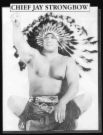
chief jay strongbow real name joe scarpa stats :6'2"265lbs. born:1928.....strongbow was one of the most famous and beloved native american wrestlers of all time and that is proven by his big box office draws. when he went on the warpath no one was safe not his opponent or the ref. he was gonna kick someones ass"when it was warpath time they all had to watch out"
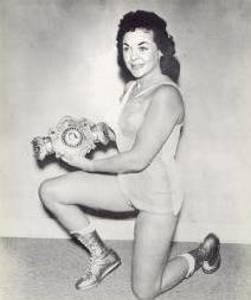
the fabulous moolah from:columbia,s.c. trained by another great woman legend mildred burke.moolah one of the most greatest women wrestlers of alltime!!!!!!

Edward "Wahoo" McDaniel was a Choctaw-Chickasaw Native American who achieved fame as a professional American football player and later as a professional wrestler.Height 5 ft 11 in weight 250 lbs born:june 19,1938.debut:1961.retired:1995.died:april 18,2002.trained by:dory funk.Wahoo was born in the small town of Bernice, Oklahoma in 1938. His father worked in oil and he moved to several towns before settling down in Midland, Texas while Wahoo was in middle school. The name "Wahoo" actually came from his father who was known as "Big Wahoo" and one of his baseball coaches was George H. W. Bush. He was a problematic teenager but he was accepted to Oklahoma University to be part of Bud Wilkinson's football program.Football career:His college career was somewhat marred by injuries early on but by his senior year, he was one of the top players on the Oklahoma team despite being caught drinking after games and skipping classes. He played linebacker for the American Football League's Houston Oilers and Denver Broncos but really became a star with when he was traded to the New York Jets in 1964. He was a crowd favorite and made 23 tackles in a single game against his former Denver Broncos. He was picked by the Miami Dolphins in the 1966 AFL expansion draft, as the team's major name player. During the 1968 season, he knocked out two police officers in an altercation and was traded to the San Diego Chargers. Wahoo never played a game for San Diego and started wrestling full-time.Wrestling career:Wahoo wrestled during the off-season, a common practice at the time due to low player salaries, for Dory Funk in Amarillo, Texas while he played for Houston and Denver. When he was playing for the New York Jets, Vince McMahon, Sr. brought him in for an often forgotten run in the World Wide Wrestling Federation (World Wrestling Entertainment). During his run, he wrestled with stars like Boris Malenko, Dr. Jerry Graham and Waldo Von Erich. When he played in Miami, Eddie Graham booked him and used him as a tag team wrestler with Jose Lothario.After leaving football, Wahoo wrestled some in Hawaii but really made his mark and had his greatest success in Houston. He feuded with Boris Malenko, eventually winning his hair, and was a frequent challenger for Dory Funk, Jr.'s NWA World Heavyweight Championship. The feud sold out the Sam Houston Coliseum on several occasion with Wahoo going time limit draws with the champ but ultimately coming up short. After Houston, he went to the American Wrestling Association and had a very successful feud with "Superstar" Billy Graham after Graham could not defeat Wahoo in an arm wrestling challenge and attacked him. Eventually, the feud turned into a tag feud with Wahoo teaming with the Crusher (another legitimate tough guy) against Graham and Ivan Koloff.In 1974, Wahoo came to Mid-Atlantic to wrestle for Jim Crockett Promotions and help build up the territory as a singles territory in a feud with a rival from Texas, Johnny Valentine. The feud evolved into a tag feud with Wahoo and Paul Jones taking on Johnny Valentine and Ric Flair, who Wahoo met in the AWA. The two feuded over the Mid-Atlantic title throughout 1975 and 1976 after Johnny Valentine's career was ended in a plane crash. Flair eventually came out on top and became a major star afterwards. In 1977, Johnny Valentine's son Greg Valentine attacked Wahoo and broke his leg in an angle to establish Greg as Johnny's successor.Other than his work in Mid-Atlantic, he wrestled in Florida, usually against then NWA World champion Harley Race. He also split his time wrestling in Georgia and the AWA. He went to Japan several times but never really caught on although he did wrestle major names like Giant Baba, Antonio Inoki and Jumbo Tsuruta. By 1980, he was wrestling in San Antonio in a feud with Tully Blanchard and his regular tag partner, "Georgous" Gino Hernandez. When the promoter in Houston broke away from the National Wrestling Alliance and recognized the AWA World champion Nick Bockwinkel, Wahoo was the regular challenger.He returned to Mid-Atlantic in 1981 and feuded with Roddy Piper over the United States title which ended when Piper brought in Abdullah the Butcher and Abby put Wahoo out on injury. Wahoo returned and had another bloody feud with Sgt. Slaughter for the U.S. title when Slaughter won the title while Wahoo was injured. In 1984, he turned on Ricky Steamboat, taking the U.S. title for the fourth time when Tully Blanchard came to Wahoo's assistance with a steel chair. He was stripped of the title but regained it in a tournament later that year. Wahoo successfully defended it at Starrcade of that year against Billy Graham but lost it to Magnum T.A. in early 1985 in a steel cage match. Wahoo feuded again with the now babyface Ric Flair for the NWA World Heavyweight title at various times before Flair turned heel again. After losing the U.S. title, he booked and wrestled mostly for Championship Wrestling from Florida. He made a tag team with Billy Jack Haynes which won the promotion's version of the NWA United States Tag Team title from Rick Rude and Jesse Barr. Wahoo wrestled some high profile matches in Florida like an unsuccessful world title bid against Ric Flair and a draw against Bruiser Brody at the Florida promotion's nationally syndicated big show, Battle of the Belts.In 1986, he returned as a face to Mid-Atlantic wrestling in some of his famous Indian Strap Matches with Jimmy Garvin and Rick Rude. He won the NWA National Heavyweight Championship but lost a unification match against NWA U.S. champion Nikita Koloff. For the rest of the 1980s, he wrestled mainly for the AWA and in Puerto Rico. He continued to wrestle into the 1990s but he was a non-factor by that point. In 1994, he participated in an angle where he and Jay Strongbow supposedly passed the torch to WWF's Tatanka. The following year, he wrestled on a World Championship Wrestling Pay-per-view in a legends match against Dick Murdoch. Wrestled until 1996 when he officially retired. Had notable feuds in the indies with Ivan Koloff and Mean Marc Ash He settled down in Houston where he died in 2002.Wahoo is often compared to Jay Strongbow, another Native American wrestler at the time, but most wrestlers and critics agree that Wahoo was a better wrestler and a more versatile draw although Strongbow was successful in the Northeast. Wahoo was respected by other wrestlers and football players for his toughness, physical style and his crazy antics outside of the ring. The respect as a legitimate athlete made it easy for him to go to different territories and be successful when many babyfaces had trouble doing so. Although his playing ability in football is often overshadowed by his wild lifestyle. Joe Namath and Larry Csonka, who played with him early in their careers, both printed stories about him in their autobiographies.
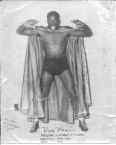
"bobo brazil" Height: 6 ft 6 in weight:270lbs. born:july 20,1924 in benton harbor,michigan debut:1951 he died:january 20,1998.trained by:joe savoldi. Houston Harris (July 10, 1924 in Little Rock, Arkansas — January 20, 1998), known professionally as Bobo Brazil, was an African-American professional wrestler who was known for breaking down barriers of racial segregation in professional wrestling. He was a favorite of not only African-American wrestling fans, but of fans of any race, creed or color. Bobo Brazil is regarded as the first successful African-American professional wrestler, he is often referred to as "the Jackie Robinson of professional wrestling." Originally, Houston was to be known as "Boo-Boo Brazil", but a local promoter misprinted his first name as "Bobo" in a print advertisement. The name "Bobo Brazil" stuck. In the early years of Brazil's career, African-American wrestling fans were forced to sit in different sections from white fans at some arenas, and Brazil was denied service at certain hotels and restaurants. To his credit, Brazil handled these issues in a dignified manner.In those early days, some wrestling promoters would only match Brazil against fellow African-American wrestlers. Fans clamored to see Brazil face opponents of any type, and soon enough, promoters responded in kind. In his wrestling career, Brazil had many classic matches with competitors such as Killer Kowalski, Dick the Bruiser, Johnny Valentine, and most famously, The Sheik, who feuded with Bobo over the course of several decades. These and other famous rivals would all fall victim to Brazil's finishing maneuver of choice, the Coco Butt. Brazil also once wrestled André the Giant to a draw, and challenged Bruno Sammartino for the WWWF Championship in a rare battle of two top babyface competitors. On October 18th 1962 Bobo Brazil made history by becoming the first African American to win the NWA world heavyweight title by defeating "Nature Boy" Buddy Rogers. Although Bobo Brazil refused the title (because of an "injury" that Rogers had claimed to have), however Bobo was awarded the title the next day after Doctors had found nothing wrong with Rogers.Bobo Brazil served as a mentor to legendary wrestler "Soulman Rocky Johnson."Brazil's manager was James Dudley, the first African-American to be in charge of a major arena in the United States. Dudley would run to the ring waving a towel, as Brazil followed behind.Bobo Brazil was inducted into the WWE Hall of Fame in 1994. He passed away on January 20, 1998 at age 74.
William Richard Afflis (June 27, 1929-November 10, 1991)best known as Dick the Bruiser...Born in Delphi, Indiana, Afflis grew up in Indianapolis and graduated from Shortridge High School. Afflis played college football at Purdue University and played for the Green Bay Packers in the early 1950s, as a lineman, before he became a pro wrestler.Afflis would later become the boss of an Indiana wrestling territory,the World Wrestling Association and promoted himself as its champion. His WWA territory lasted from 1964 into the mid-late 1980s. He became something of a hero to the area. Indianapolis native, David Letterman, would later name his television band "The World's Most Dangerous Band", a take off of Dick The Bruiser's nickname, "The World's Most Dangerous Wrestler"The Bruiser was a beer-drinking, cigar-chomping tough guy, who is most remembered as one-half of the legendary team with The Crusher..Afflis died of a heart attack after completing his daily morning workout on November 10, 1991, at the age of 62.
Austin Idol (born Dennis McCord) was a professional wrestler. He was known as the "Universal Heartthrob".Austin Idol graduated from Robinson High School in Tampa, Florida. He started wrestling in 1972 and wrestled in the southeast promotions holding many titles in the USWA, Georgia, & Mid Atlantic territories. He had a long running feud with Jerry Lawler.He retired in 1995. He was considered as one of the better wrestlers never to make it big.""profile"ht:6 ft 2 in. weight:242lbs birthday:october 26,1949 hometown:tampa,fl. billed from:las vegas, navada
mick foley
Aurelian Jake Smith, Jr. (born May 30, 1955 in Gainesville, Texas), better known by his ring name of Jake "The Snake" Roberts,Roberts played a notorious heel in the World Wrestling Federation throughout the 1980s. He was known for his spellbinding promos and dark charisma, his extensive use of psychology in his matches and for inventing the DDT finishing maneuver.
rick rude "Richard Erwin Rood, better known by his ring name of "Ravishing" Rick Rude (December 7, 1958 � April 20, 1999) was a professional wrestler who performed for many promotions, most notably World Championship Wrestling and the World Wrestling Federation, in the 1980s and 1990s. After graduating from Anoka Ramsey Junior College with a degree in Physical Education, Rood began wrestling in 1983 as Ricky Rood, a babyface jobber. He competed for Georgia Championship Wrestling before moving on to the Memphis-based Mid-Southern Wrestling. He later left and joined the National Wrestling Alliance affiliate Jim Crockett Promotions where he and a variety of tag team partners feuded with The Road Warriors. He returned to Mid-Southern Wrestling in 1984, this time as "Ravishing" Rick Rude, an overconfident, arrogant heel managed by Jimmy Hart. Rude feuded with Jerry Lawler and later his former partner, King Kong Bundy. Rude was hired by Florida Championship Wrestling in December 1984 where he was managed by Percy Pringle and feuded with Billy Jack Haynes and Wahoo McDaniel, while teaming with Jesse Barr. After a year, he jumped to World Class Championship Wrestling along with Pringle, where he feuded with Kerry Von Erich, Kevin Von Erich and Chris Adams. After losing the WCCW Championship to Adams in July 1986, he fired Pringle and briefly replaced him with his sister, Raven. He formed a short-lived tag team with The Dingo Warrior, but the Warrior turned on him and became a face.In September 1986, Rude returned to Jim Crockett Promotions and joined Manny Fernandez and his manager Paul Jones in their rivarly with Wahoo McDaniel. Rude and Fernandez won the NWA World Tag Team Championships on December 6, 1986 from the Rock 'N Roll Express, and began an epic feud that ended only when Rude left the promotion for the World Wrestling Federation in April 1987. To explain the sudden departure, Jim Crockett, Jr. aired a pre-taped non-title match where the Express defeated Rude and Fernandez and claimed that Rude had been injured as a result.World Wrestling Federation"In the WWF, Rude was managed by Bobby "The Brain" Heenan and feuded with "Mr. Wonderful" Paul Orndorff before starting one of his most famous feuds with Jake "The Snake" Roberts. Rude had a routine where he would kiss a girl (that Heenan picked from the fans) all the way down to the mat. He tried to get Roberts' wife, Cheryl, to comply, aggravating Roberts. On one memorable occasion, Rude came to the ring with a picture of Cheryl stenciled on the front of his tights. A furious Roberts charged the ring and stripped Rude, appearing to leave him naked.Rude's next big feud was with The Ultimate Warrior and began in January 1989. With a little help from Heenan, Rude won the Intercontinental Championship from the Warrior at WrestleMania V, before dropping it back to the Warrior at SummerSlam 1989 due in large part to interference from "Rowdy" Roddy Piper. Rude then feuded with Piper, before resuming his conflict with the Warrior in the summer of 1990 after the Warrior had won the WWF World Heavyweight Championship. The two battled in a cage at Summerslam 1990, in the only Pay-Per-View Rude would ever headline as a solo wrestler. Rude failed to win the title and departed the WWF in October 1990.Rude returned to Jim Crockett Promotions, now known as World Championship Wrestling, as The Halloween Phantom at Halloween Havoc on October 27, 1991. He founded and led The Dangerous Alliance, consisting of himself, Paul E. Dangerously, Madusa, Arn Anderson, Bobby Eaton, Larry Zbyszko and "Stunning" Steve Austin. Rude won the United States Championship from Sting and feuded with Ricky Steamboat, at one point breaking his nose in a gang attack.In 1992, Rude and Madusa left The Dangerous Alliance and feuded with Nikita Koloff. Rude challenged reigning World Heavyweight Champion Ron Simmons on several occasions but did not defeat him. He was injured in December and was forced to forfeit the United States Championship. Rude returned alone in April 1993 and tried to reclaim the title from Dustin Rhodes, who had won it while he was injured. The title was eventually held up after several controversial finishes to matches between the two.Rude switched his sights to the NWA World Heavyweight Championship, making his intentions clear on August 28, 1993, when he was the guest on then-champion Ric Flair's "A Flair For the Gold" talk show. Rude went on to defeat Flair for the title in September 1993 at Fall Brawl. However, as WCW had recently withdrawn from the NWA, the title could no longer be called the NWA World Heavyweight Championship (WCW had purchased the belt itself, however). The title was renamed the WCW International Championship, which Rude lost to Hiroshi Hase on March 16, 1994 in Tokyo, Japan. Rude regained the title just eight days later in Kyoto, Japan. After dropping the title to Sting on April 17, Rude pinned Sting on May 1 to become a three time champion. However, Rude was stripped of the title as he was found to have used the title belt as a weapon in the course of the match. Rude retired shortly after due to a back injury suffered while wrestling Sting.Rude collected on an insurance policy and did not compete in wrestling again until 1997, when he joined Extreme Championship Wrestling as a masked man who harassed Shane Douglas, at one point spanking Francine. He eventually unmasked and became a color commentator. He would later align himself, for a short time, with Shane Douglas and his Triple Threat. During the ECW versus USWA / WWF inter-company competition, Rude helped Jerry "The King" Lawler defeat ECW mainstays, Tommy Dreamer and The Sandman. Rude later returned to the WWF as an "insurance policy" of D-Generation X (Shawn Michaels, Triple H and Chyna). He assisted with several sneak attacks on The Undertaker. He left the WWF after the Montreal Screwjob in 1997 Survivor Series. According to Bret Hart, Rude stayed in the locker room during Bret's confrontation with Vince McMahon. Rude then called Eric Bischoff and informed him what had happened was in fact real. As Rude was not signed to a full-time contract with WWF, and was performing on a "per appearance" basis, Rude was able to negotiate a deal with Bischoff and WCW, in part due to his anger over the Montreal Screwjob. Then, in a memorable evening causing much embarrassment to the WWF, Rude appeared on both RAW is WAR and WCW Monday Nitro on November 17, 1997. A clean-shaven Rood appeared on Nitro, which was live, and proceeded to criticize the WWF, calling the company the "Titanic" (a reference to Titan Enterprises, as the WWF's parent company was then known, as the "sinking ship"). An hour later on RAW (which had been taped six days earlier), Rude then appeared with a beard.Rude became a member of the New World Order, managing his friend Curt Hennig. When the nWo split, Henning and Rude joined the nWo Wolfpac and tried to motivate Konnan to defeat Goldberg, who was undefeated at the time. When Konnan was defeated by Goldberg, Rude and Henning attacked him, later joining nWo Hollywood, the rivals of the Wolfpac. By late 1998, Rood had left WCW amid rumors that he was training for a comeback to full-time wrestling. He briefly appeared with the WWF as a commentator on their pay-per-view pre-shows.Rick Rude died on April 20, 1999 after suffering heart failure. His premature death has been attributed variously to alleged steroid abuse and the cumulative effect of the bumps he took throughout his career.

